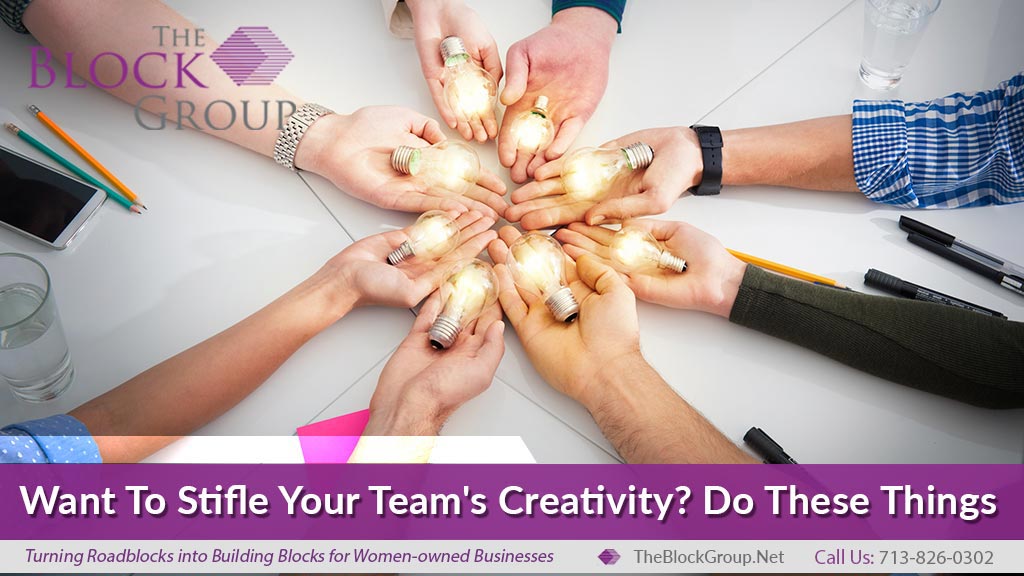
Want To Stifle Your Team's Creativity? Do These Things
The slate of companies going public this year— Pinterest, Slack Technologies, and Uber, to name a few—should silence anyone who doubts the power of a bold idea.
After all, one seemingly crazy brainstorm can up end an entire industry, keeping innovation top of mind for every executive. Fortunately, you don’t need to be a coding genius in a dorm room to birth a breakthrough, says Harvard Business School Professor Teresa M. Amabile, who has studied the interplay between creativity, productivity, and innovation for more than four decades.
Amabile, who is the Baker Foundation Professor and Edsel Bryant Ford Professor of Business Administration, Emerita, reflected on her research and its impact in an essay in Perspectives on Psychological Science, Educating Leaders Who Make a Difference in the World (pdf). More recently, she discussed how artificial intelligence might enable creative breakthroughs in an Academy of Management Discoveries article, Creativity, Artificial Intelligence, and a World of Surprises.
Danielle Kost: Every executive is searching for the next big idea or strategy. Are there any techniques or approaches that people can use to stimulate their own creativity at work?
Teresa M. Amabile: Three of the components necessary for creativity reside within the individual, and one component, a conducive work environment, is external. The internal components are:
- Expertise. People need expertise to be creative. So, to the extent that you can continue to learn not only in your primary domain, but in other, related domains, you'll begin to see connections that could lead to a breakthrough.
- Creative thinking skills. Some people are naturally able to think outside the box. But we can all learn and improve our creative thinking skills. For example, there are techniques that involve using different kinds of visual stimulation. You could go to an art museum and see what ideas emerge as you look at the art, and then try to make connections to some tricky problem that you're trying to solve in your work. It’s also very useful to stimulate your thinking by talking to other people—brainstorming or simply getting new input on your ideas.
- Intrinsic motivation. This is the drive to do something primarily because you find it interesting, enjoyable, satisfying, or personally challenging. Our research has shown that, unfortunately, a non-conducive work environment can undermine intrinsic motivation. Your immediate manager plays a huge role in establishing your work environment for creativity, the extent to which your creativity will be stimulated or diminished.
Kost: When managers want to inspire more creativity in their teams, what should they not do?
Amabile: Unfortunately, for many managers, behaviors that undermine creativity are more natural than behaviors that stimulate it. Many of the management approaches that people learned through decades of management education—especially in the 1950s and 60s and 70s—can really stifle creativity. These are things that managers should really try to avoid. In fact, to the extent possible, they should try to do the opposite:
Excessive constraint. Among destroyers of creativity, or “creativity killers,” as I call them, excessive constraint is probably number one. When people are supposed to be coming up with new ideas or solving complex problems in new ways, they need to be given a lot of autonomy. But it's very hard for some managers to change their command-and-control management style, even when it's creativity and innovation that they’re after.
Meaningless work. People tend to do their most creative work when they find deep meaning in what they're doing—when they feel that their work really contributes to something that matters. If people lack that meaning, it's very hard for them to stay intrinsically motivated and creative. Many managers don't realize how necessary it is to help people understand the importance of their work.
A status quo bias. Some upper managers pay lip service to creativity and innovation, but they're clearly oriented toward maintaining the status quo. They're suspicious of new ideas. Sometimes the organization has a culture where new ideas are evaluated harshly, and people see that. It speaks much louder than any corporate mission statement.
Risk aversion. Creative work requires an environment where there’s what my colleague Amy Edmondson would call psychological safety—an environment where people feel free to speak up with new ideas even if those ideas may be far out. They have to feel free to call out mistakes and errors in their own and other people's work, with the understanding that people are not going to get shot down because they tried something new that failed. When you're trying to be innovative, you're going to end up with a lot of failures. And if you don't, you're really not trying hard enough.
If you find that you're in a creativity-stifling environment, you may need to transfer to a team that works under a different manager or has a different set of colleagues. You could look for assignments that you find more intrinsically interesting. You might ultimately think about changing organizations, if you find that the one you're in is not allowing your creativity to really achieve its potential.
Kost: Artificial intelligence techniques and tools are influencing how companies conduct business and make decisions. How do these technologies affect creativity?
Amabile: It depends on how we use these approaches and technologies. If we view them as a way to support our own limited intelligence, it can be very positive. Each one of us has great brain power, but it's limited in certain ways. It's very hard for us to look at massive amounts of data and detect patterns, for example, but machines can, if we tell them what to look for.
So combining a machine’s ability to recognize patterns with our own ability to interpret them should be a tremendous boon to our creativity. However, if we feel threatened by the machines that we're working with, like they are going to take over the work that we do, that's likely to stifle that creativity.
Source: Forbes
Patty Block, President and Founder of The Block Group, established her company to advocate for women-owned businesses, helping them position their companies for strategic growth. From improving cash flow…. to increasing staff productivity…. to scaling for growth, these periods of transition — and so many more — provide both challenges and opportunities. Managed effectively, change can become a productive force for growth. The Block Group harnesses that potential, turning roadblocks into building blocks for women-owned businesses.

Business Coaching for Women in Houston Texas
Business consulting for women entrepreneurs in Houston Texas, Advice for women entrepreneurs, Business Coach in Houston Texas, Growth strategies for small business, Business coaching for women, Growth for women-owned businesses, Houston Texas business coaching, Financial strategies for small business, Small business consulting in Houston Texas, Business management consultant, Business, Consulting, Women, Entrepreneurs, Houston Texas, Coach, Growth, Strategies, Coaching, Owned, Owner, Financial, Consulting, Management.




